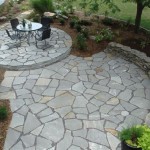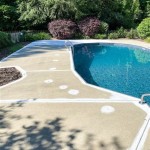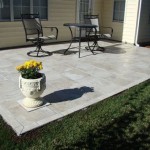Good drainage is essential for any patio area in order to avoid standing water and help keep the area dry and safe for use. Poorly draining patios can be a nuisance, as water can accumulate and cause damage to the patio’s surface or structure. To ensure effective drainage, several factors need to be taken into consideration, including the size and shape of the patio, the type of surface and the climate in which it is located.
The size and shape of the patio are important factors in determining the drainage capacity. A patio with a larger, more open area will typically require more drainage capacity than a smaller, closed-in patio. It is important to also consider the slope of the patio. A patio with a steep slope will drain more quickly than a flat patio, as water will move more quickly down the slope. However, a steep slope can also be problematic, as water can move too quickly and cause erosion.
The type of surface material used on the patio is also important for effective drainage. Materials such as gravel, sand, and permeable pavers are porous and allow water to flow through them, which prevents water from pooling on the surface. Non-permeable materials such as concrete and asphalt do not allow water to pass through them, so they are not suitable for patios where drainage is necessary.
The climate where the patio is located will also have an impact on the drainage. In areas with high rainfall or snow melt, a larger drainage capacity is necessary to ensure water is quickly and efficiently removed from the patio. In areas with low rainfall, a smaller drainage capacity may be sufficient.
Finally, proper drainage systems need to be in place to ensure water is quickly and effectively removed from the patio. These systems can include surface drains, subsurface drains, and drywells. Surface drains are typically used for patios with a large surface area, as they collect and direct water away from the patio. Subsurface drains are typically used for smaller patios, as they are installed below the patio surface and allow water to flow away from the patio. Drywells are also used to collect and direct water away from the patio, as they allow water to percolate into the ground.










Related Posts








